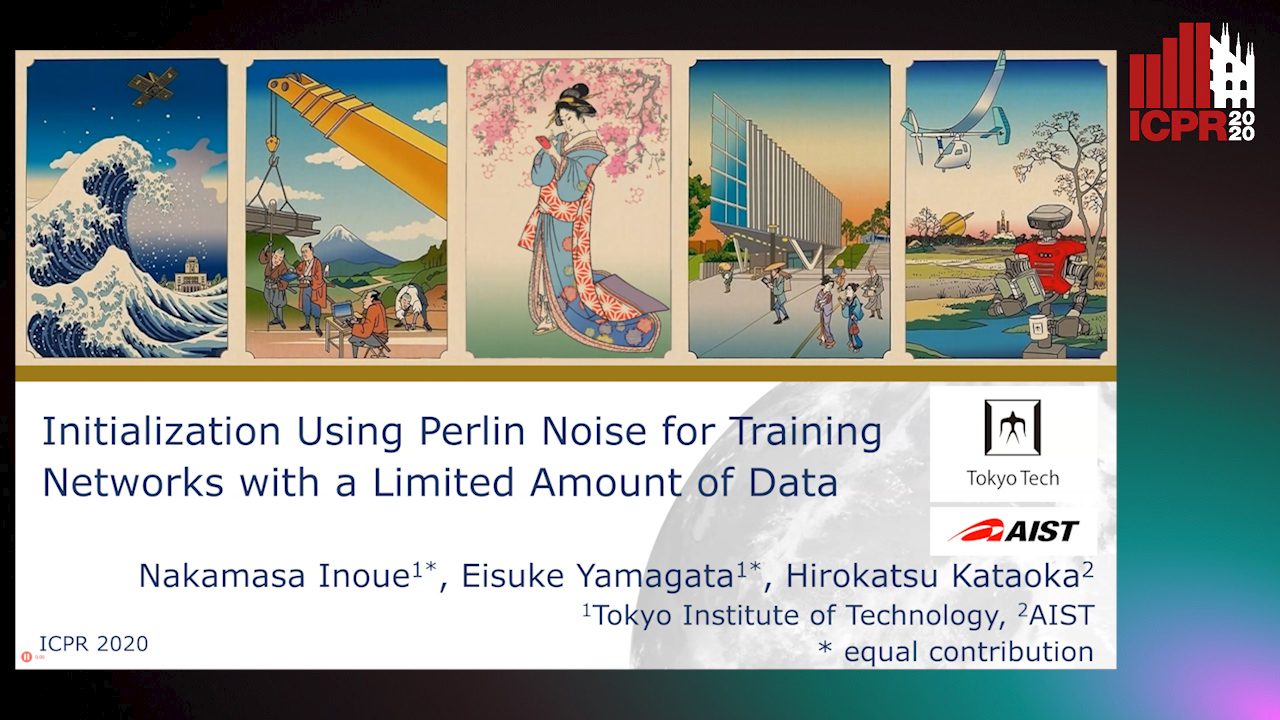Nakamasa Inoue
Papers from this author
Augmented Cyclic Consistency Regularization for Unpaired Image-To-Image Translation
Takehiko Ohkawa, Naoto Inoue, Hirokatsu Kataoka, Nakamasa Inoue

Auto-TLDR; Augmented Cyclic Consistency Regularization for Unpaired Image-to-Image Translation
Abstract Slides Poster Similar
Initialization Using Perlin Noise for Training Networks with a Limited Amount of Data
Nakamasa Inoue, Eisuke Yamagata, Hirokatsu Kataoka

Auto-TLDR; Network Initialization Using Perlin Noise for Image Classification
Abstract Slides Poster Similar